This is part III of a three-part report on a trip we took diving around the world. This part describes our experiences on the Indian Ocean Explorer, from the Seychelles to Aldabra.
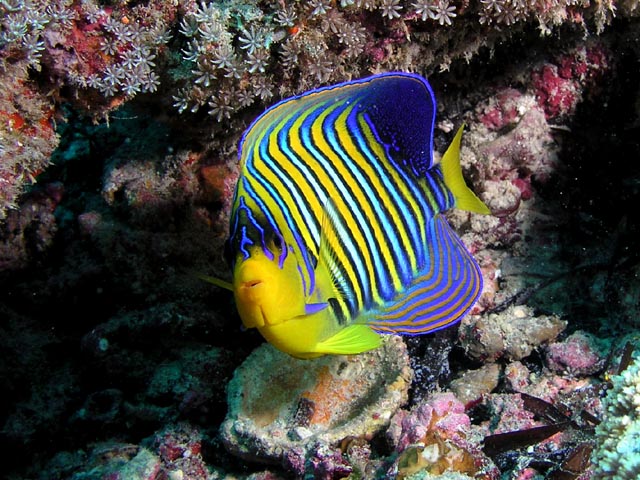
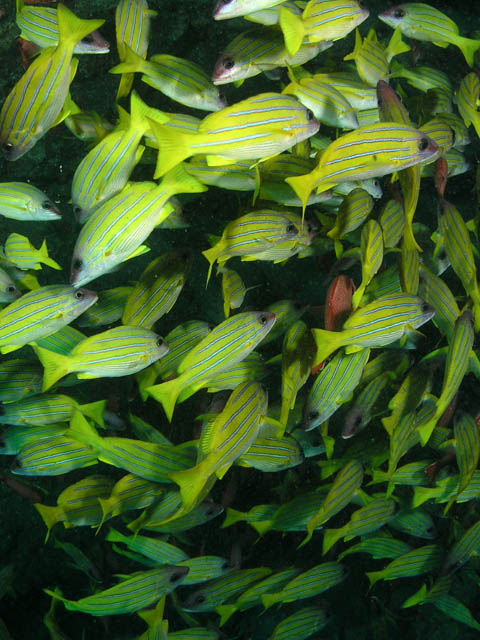
On to the Seychelles! We went directly from the Komodo Dancer to the airport in Bali to catch our flight to Brunei on Royal Brunei Airlines where we connected with a second, late night, RBI flight to Dubai. Our connection in Dubai was a short one; only one hour to get off the plane, find the transfer desk, check in with Emirates Air, race down the terminal to the last gate, and board a bus to the plane. I wasn't optimistic about either us or our luggage making it, but the helpful, friendly people at Royal Brunei and at Emirates Air managed to pull it off and we were safely on the plane when they closed the doors - I'm getting too old for this stuff; we slept most of the way to Mahe.


We booked two nights at the Le Meridien Barbarons to degas and wait to join the Ocean Explorer. It's a nice property, located right on the beach - not too, too expensive for a location filled with very expensive properties. The euro was very strong against the dollar, which didn't help.

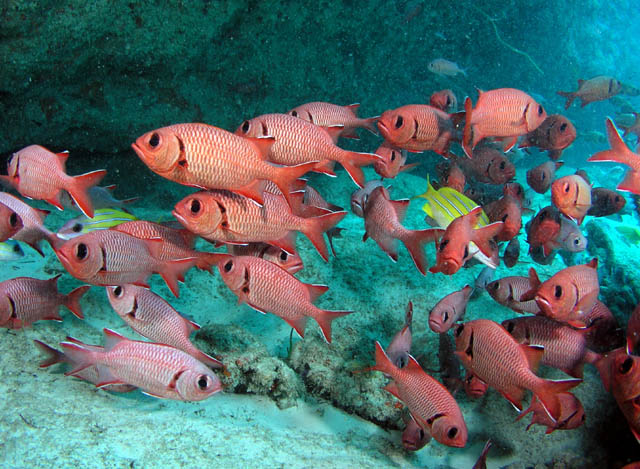
The IOE is a steel vessel, 116 feet long and displacing 250 tons. There are seven guest cabins below deck with A/C and en suite heads. The cabins are snug and space is at a premium, but we found the boat to be quite comfortable.

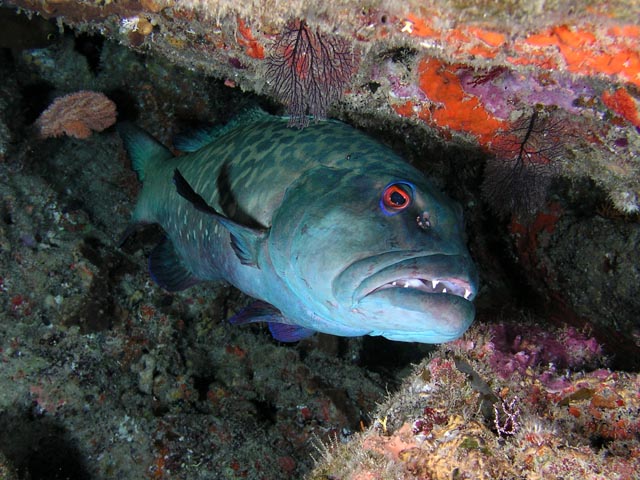
The trip we booked on the IOE was a twelve night trip from the Seychelles to Aldabra, visiting and diving the various desert islands on the way: Desroches, Alphonse, St. Pierre, Astove, Cosmoledo., and finally Aldabra. This itinerary is only done twice a year, when they relocate the boat to Aldabra. The islands and dive sites are rarely visited by any divers; we were lucky to get the opportunity to do so. The IOE also offers seven-day trips to Aldabra where guests are flown to the atoll from Mahe and back by chartered turbojet. She also does inner-island excursions in the Seychelles proper when not located at Aldabra. The boat is chartered by fly-fishermen, whale watchers, scientists, etc. when not running dive trips.
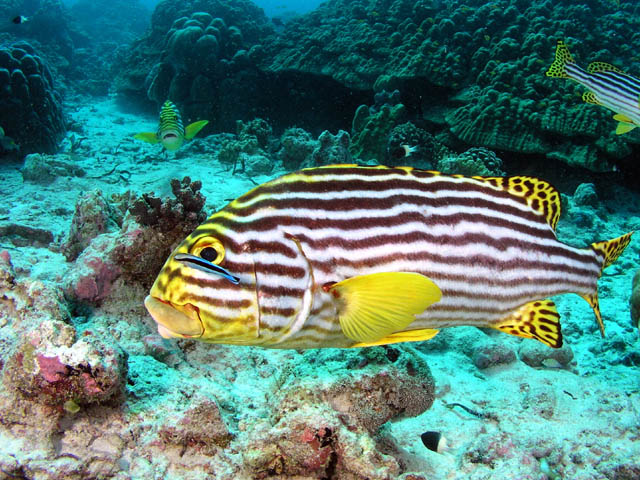

There was no word at the hotel about when and where to meet the IOE. Repeated phone calls and promises of a fax that never came did not make me a happy camper. Finally, I was told to be at the InterIsland Quay at 11:30. We checked out of the hotel and took a cab across the island - no boat at the Quay! So, we sat with our luggage in the shade and eventually were approached by someone from the IOE. They were looking for the rest of the group and seemed rather disorganized. Once everything was sorted out, we were taken by dinghy to the boat. Things went rapidly downhill from there; one couple announced that the wife was ill and they were getting off the boat; the harbor master was delaying the departure; and they were having trouble finding a second dive master. Japanese boats had hired all the local divers they could find to gather sea cucumbers and were paying three times the going rate. We heard that some land operations were without any dive guides! Anyway, we finally got going about 4:30 in the afternoon and motored to the north end of Mahe for a check out dive at L'ilot, a small boulder island with a couple of palm trees. The twilight dive circumnavigated the little islet and we saw lots of typical Indian Ocean fish.
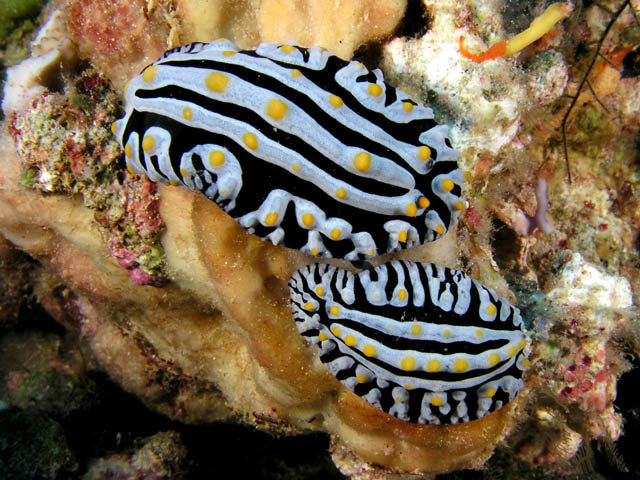

The owner of the IOE, Peter Holland, was on board, as were his partner and his parents. Peter is Swiss; he bought the boat a couple of years ago from the previous owners who had deferred a lot of needed maintenance. She looks good for an old lady - the boat, not Deborah...well, Deborah, too! Peter has put a lot of money into fixing her up...the IOE, not Deborah. I wouldn't say the IOE is at the level of most of the Aggressor/Dancer boats, but certainly a nice boat to spend time on when not diving.
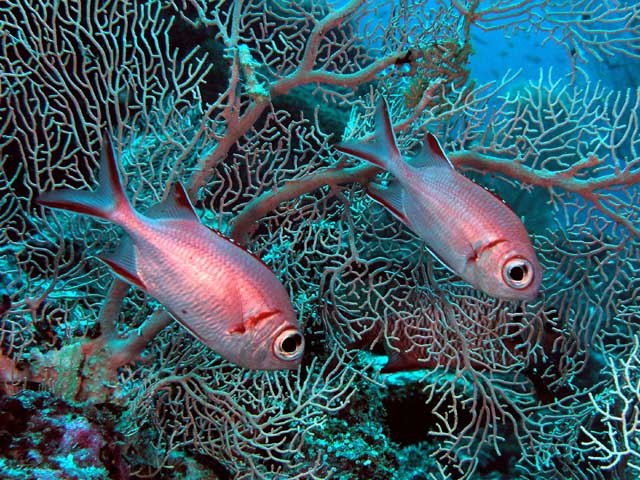
Formation diving - a new PADI specialty

That night, a second dive guide, Monty, joined the boat and we were off. It was a rough crossing to Desroches and several of the guests suffered a little mal de mer. The late start from Mahe resulted in a late arrival at Desroches where we only got in two dives. Visibility sucked - sand and bits of turtle grass clouded the water. They had some trouble finding the first dive site even with gps, but we finally got in the water. The landscape - the bottom - was barren of any corals or sponges, but there were a couple of nice caves with nurse sharks and big rays. One of the caves was full of schools of bigeye and blue-lined snappers. The second dive was along a wall in a screaming current. At one point, I stopped to take a picture and lost my group. Later, I hooked up with the other DM and finished the dive with her and another diver from the other dinghy. They issue dive flags - bungied pvc flag staff and yellow flag - to deploy as surface markers. These dive flags work great and are readily visible from over a mile away in the chop and swell. The diving is definitely for experienced divers who are comfortable with currents, blue water, rough seas, and deep walls.


Nitrox was NOT available - the IOE's website needs to be updated.! The nitrox compressor had not been working for some time and the membranes had been taken off the boat.


After dinner, the boat departed for Alphonse - a very rough night for all. I found the ice machine fallen over when I went for coffee at dawn. Deborah had some sort of stomach flu and wasn't feeling well. The marine head in our cabin malfunctioned - a word to the staff, and it was fixed right away. This was a shake down cruise and things were certainly shaking. They had engine trouble with one of the dinghies but sorted it out pretty quickly.
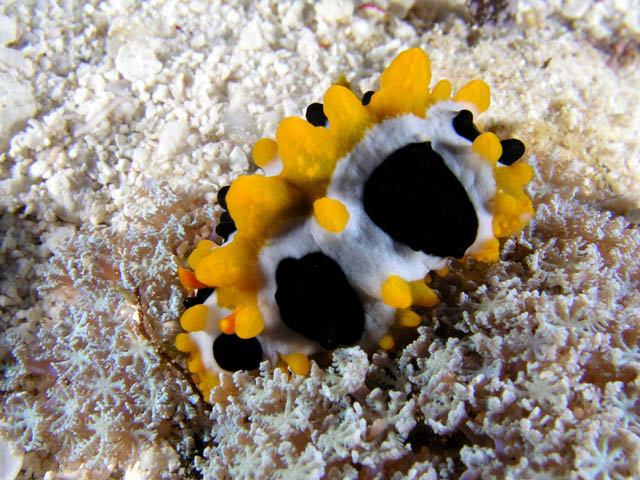
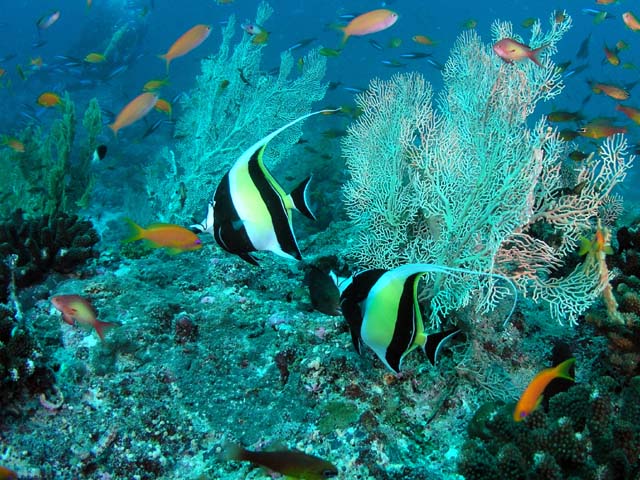
Woo Hoo! Much better visibility and diving at Alphonse! There are healthy hard corals there - small, but healthy, and huge sea fans. Many large schools of smaller fish, giant trevalley, groupers, barracuda, napoleon wrasse, moray eels, etc. patrolled the reef. The smaller fish are rather skittish and dart out of sight when I got too close - fish portraits were a real challenge.
We stayed overnight at Alphonse and everyone finally got a good night's sleep. The second day found even better diving, with the best at a dive site called, the Abyss - a wall that dropped off into the deep that was dotted with huge sea fans and some impressive schools of fish. Most of the guests went for a land excursion to the island in the afternoon. There's a fly-in resort here with an airstrip that bisects the island. I think this is the last inhabited island on the way to Aldabra. The ocean was getting flat - cross your fingers.
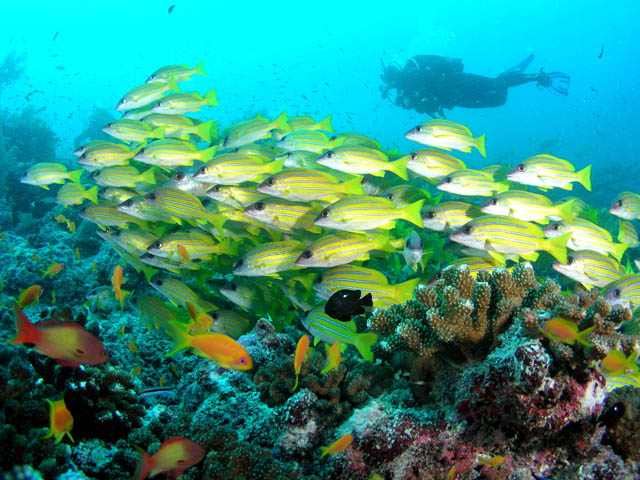
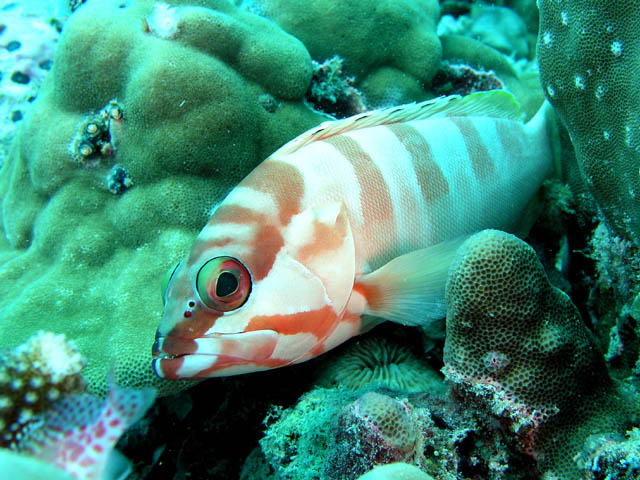
Food, in a word, was excellent! First breakfast was cold cereal, toast, etc., available at 6 AM. First dive at seven, followed by second breakfast - eggs, bacon, etc. Second dive, followed by lunch buffet, third and fourth dives (and or land tour), then a served dinner & dessert - great desserts. We got lots of fish to eat and loved it. Beverages other than alcohol were included.

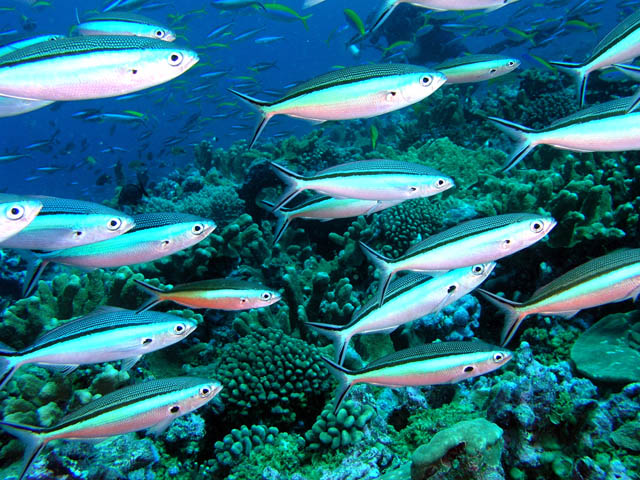
All diving was done from two RIBs with 75 horse Yamaha outboard engines. Gear was put on and taken off the boat by the crew. The tanks were STEEL 12-Liter chubbies! I dove with no weight belt in a 5mm suit! Water temps were in the high seventies/low eighties and 3mm/5mm thermal protection was the norm. Most dives were limited to a maximum depth of 35 meters, maximum bottom time of 50 minutes or 50 bar remaining in your tank. No one checked computers and accidentally going into deco was not a problem as long as the dive computer cleared before ascent.
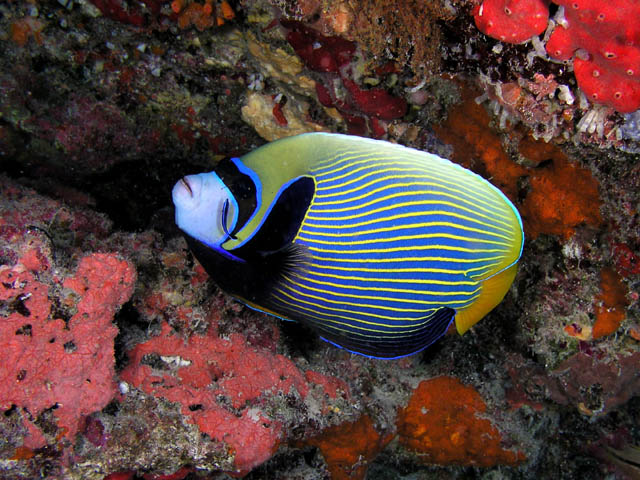
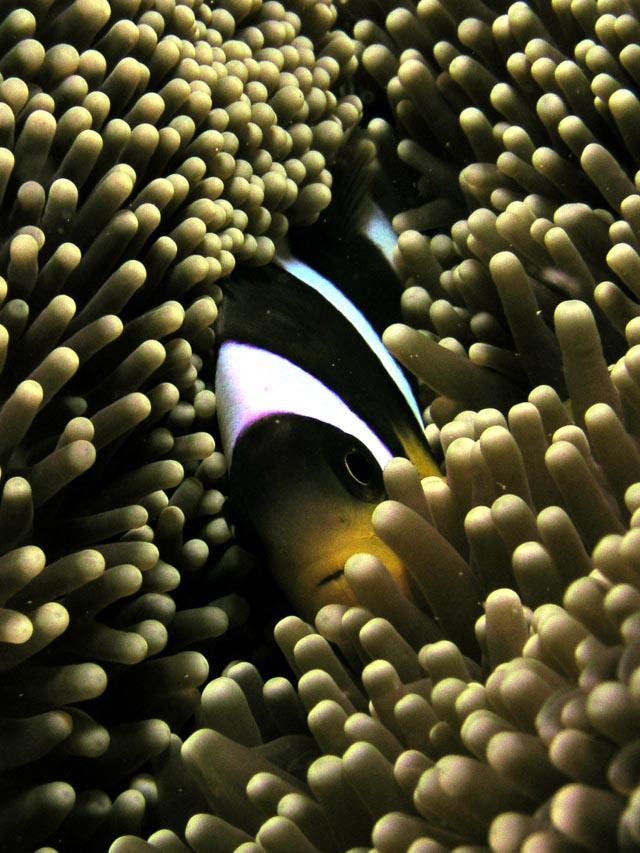
We stayed three days at Alphonse. The best dive sites on this island, and highlights of the trip, were "Abyss" and "Napoleon." At Abyss, a wall drops off into the deep and is covered in man-sized sea fans. Schools of jacks and other fish play tag on the reef as the divers drift along. At the end of the dive, you can move up onto the top of the reef where many small stony corals are home to little creatures as well as turtles, groupers, et al. Napoleon is a low-relief reef located in blue water at a depth of 25 meters - a strong current offered up tasty schools of snappers, grunts, Napoleon wrasse, bumphead parrotfish, seasoned with anthias in pastel colors. I could have stayed there for the whole trip shooting wide-angle shots. Departing Alphonse after an early morning dive on Napoleon, we made the 22-hour crossing to St. Pierre - getting ever closer to Aldabra!


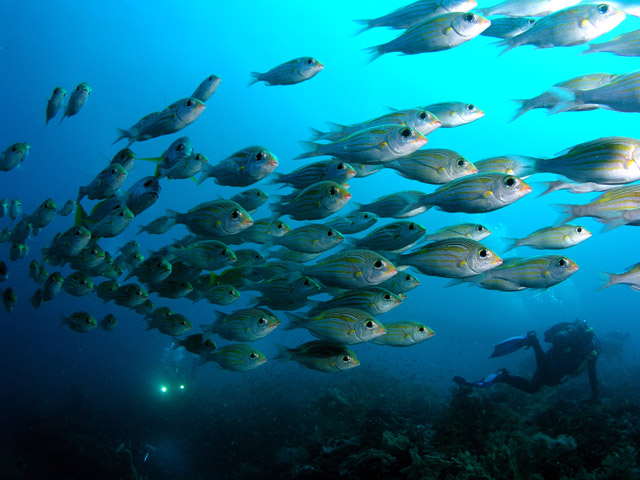
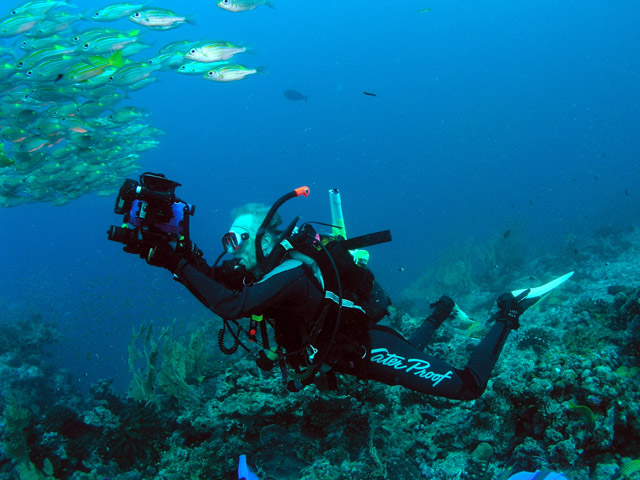
The next morning, we arrived at St. Pierre, a small island in the middle of a large ocean. Unlike many of the other islands, St. Pierre doesn't have a fringing reef, but falls off to very deep water on all sides. She was once mined for bird guano, but is now uninhabited and rarely visited by anyone, much less divers. We did two dives here and were treated to big groupers, schools of jacks, one silver-tip shark, turtles, and Napoleon wrasse. Tim spotted a leaf scorpionfish and I found an anemone shrimp. After lunch, we began the next big jump, 24 hours to Cosmoledo.

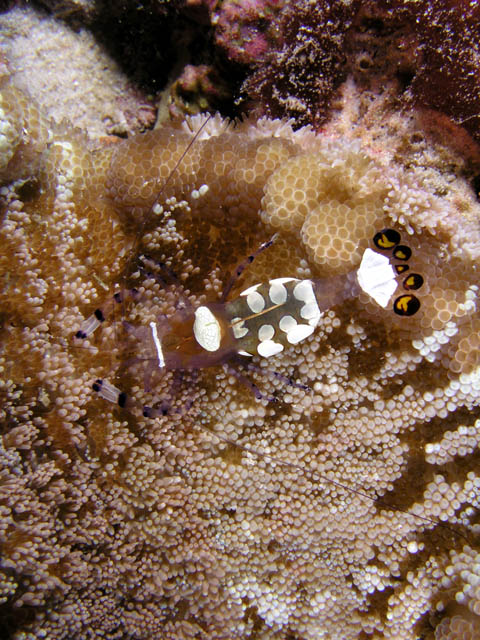
Cosmoledo - Wow, two days: I'le du Nord, Cemetery Reef, night dives in search of Spanish Dancers, and Steps in the channel at the south end (huge table coral overlapping as they stepped down the long slope into the deep). It was only a short hop to our next stop, Astove


Astove - three dives on the wall!!!! What a wall: turtles, big groupers of all kinds, vast shoals of small fish on the wall that flinched every time one of groupers twitched. Slow drift dives over a 4,000-foot drop-off with caverns and overhangs to explore. Add to that, great visibility and you have some really memorable dives. The dives just kept getting better and better as the days passed.


When I discovered that I didn't need any weights with the steel tanks, I was a little ambivalent, pleased that I didn't need a weight belt, and thoughtful about not having a weight belt to ditch in case of an emergency. If I added some more neoprene, then I could wear some ditchable lead...or not!
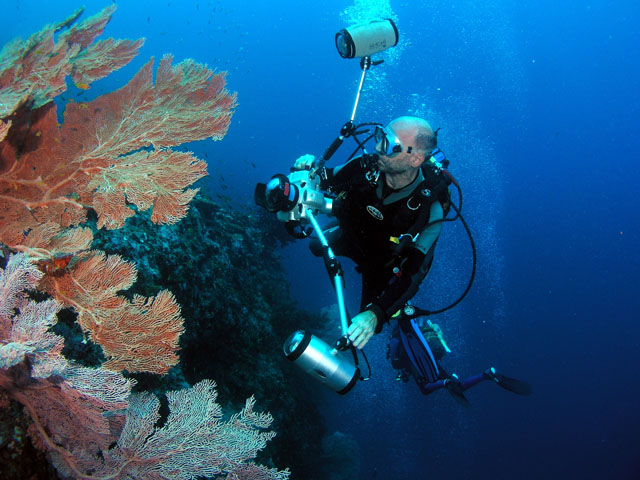
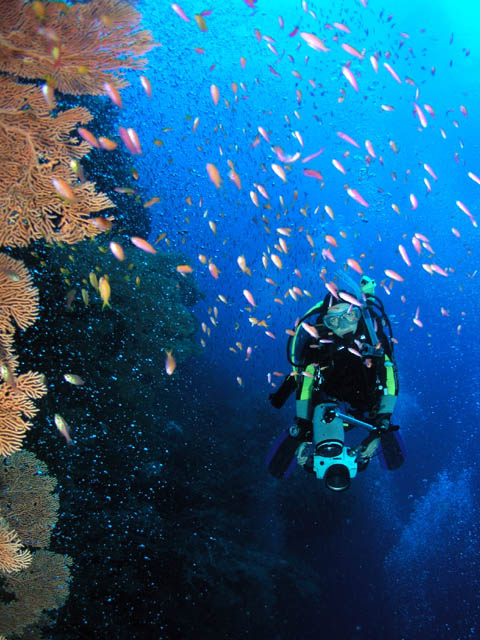
Spanish dancer

Overnight to Aldabra - we passed the main channel into the lagoon as the sun came up. East channel - New Jack City - we dropped down on a large school of intermediate size jacks! I could make out a school of twenty+ large bumphead parrotfish on the edge of visibility. The other side of the channel is called Ski Slope (formerly known as Stingray City). The sand chutes where the rays were formally found appeared to have been washed away and no rays were seen, although we did have a nice slow drift along the slope looking at all the small stuff. I found a family of five fire dart gobies, but couldn't get a good picture to save my life. The third dive was in the channel itself, with the incoming tide - an E-ticket ride - large groupers, rays, a nurse shark, and a man-size turtle were briefly seen as we whizzed by; let's do that one again! We did an easy night dive to end the day. There wasn't much going on, but Deborah found a sleeping turtle that wasn't all that happy to be awakened by the strobes on my camera.

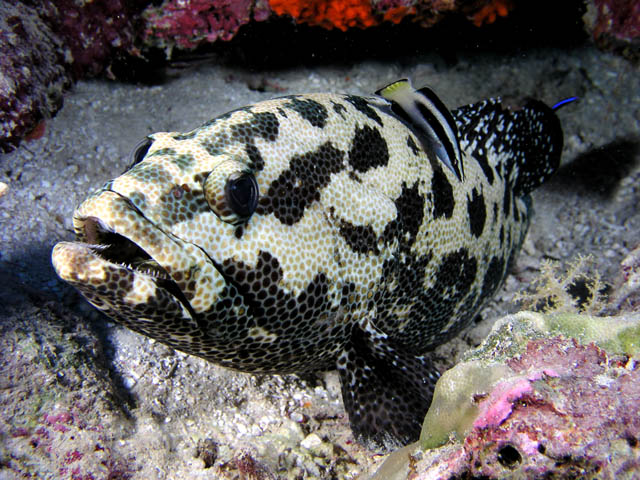
Our second day and last day at Aldabra put us in the water for a couple of easy dives along the sloping walls - a friendly grouper came to play with the DM, an octopus played hide-and-seek, a couple of turtles put in an appearance, and an eagle ray did a fly-by to end the dive. Only four of us opted to do the final dive of the trip, and what a dive it was! We dropped into the main channel on the incoming tide - another E-ticket ride at 80 feet through a canyon at high speed, passing turtles, big grouper, and bumphead parrotfish on the way. It was all over too soon. I opted not to carry the camera on this dive, an excellent decision as there was no way I could have taken any pictures, it was just too fast.

White throated wingless rail - an endangered species

While everyone else started the land tour on Aldabra, Deborah and I were treated to a snorkel with some juvenile black-tip reef sharks. Afterwards, we went on shore and saw the giant tortoises and toured the scientific station. A World Heritage Site, there are only a dozen scientists and rangers on the atoll, which is home to 100,000 giant tortoises.


Where have all the sharks gone? Prior to the snorkel with the handful of baby black-tips, we had only seen a couple of requiem sharks on this trip. Has shark fishing really decimated the shark populations to the point of near extinction? We were told that there were over two hundred Taiwanese long-liners working the waters between Aldabra and Madagascar. When will the slaughter stop, when there are no more sharks to kill?
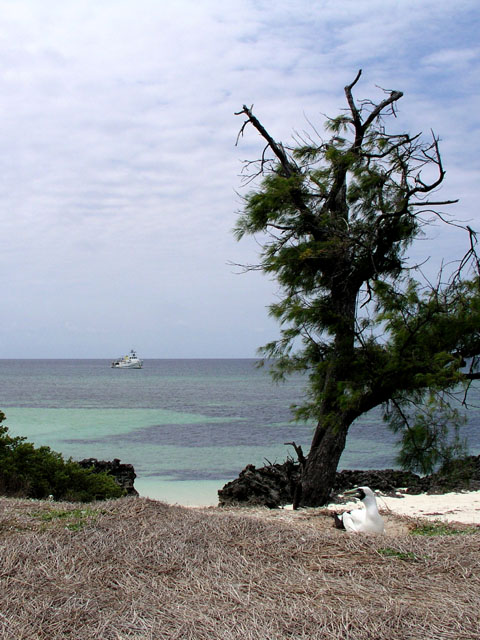
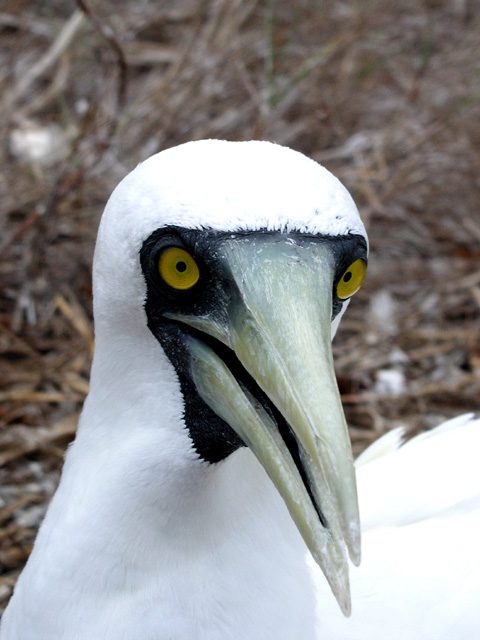
The next day, we pulled anchor and made the crossing to Assumption Island to catch the plane back to Mahe. Assumption Island was mined for bird guano and is totally barren in the interior of the island. The airstrip is concrete and a chartered Beech 1900D delivered the next boatload of guests for the IOE - fifteen Russian fly-fishermen! After refueling, we took off for the 2.5 hour return to Mahe. On arrival at Le Meridien, we were told that the hotel was full (so much for "guaranteed" reservations); we finally found rooms at the Plantation Club and crashed for the night. One day to dry and repack our dive gear before flying to London on our way back home.
The first class lounge at the Assumption "airport"


In conclusion, it was a fantastic six weeks. We met a bunch of really nice people, did many wonderful dives, and saw lots of wonderful critters. My favorite places were Wakatobi and the Indian Ocean Explorer. Komodo was nice, but the diving wasn't as great as in the other two spots. I would go back to Wakatobi in a heartbeat and spend more than a week there.
Sunset over Aldabra

"If you can afford to go first class and don't, you can be sure your kids will!"
[Postscript: I've been told that the web site information regarding the availability of Nitrox on the IOE has been updated. Maureen says, they are working hard on getting the system up and operating. I've also learned the lady who had to leave the boat the day we were to start in fact had two slipped discs and a pinched nerve in her neck. We wish her a speed recovery. Another reason for the delay in leaving port was the
SIF (Seychelles Island Foundation) insisted at the last minute that they take on the computer and telecom freight for the system theywere installing in Aldabra and deliver it gratis. This created a 1.5 hours delay.
The fine print:
Photographs - taken with an Olympus c5050 camera in an Olympus PT-015 housing, dual Ikelite DS-125 strobes with manual EV-controllers, and optional Inon lens adapters (WAL/macro). Most images are straight out of the camera - a few were cropped and/or minimally modified with Photoshop 7.0.
Travel - Sue Pantle at Uncommon Adventures for the Bali/Wakatobi legs of our trip. Debbie Lanham at Maduro Travel for the Komodo Dancer, Seychelles, Indian Ocean Exporer. Shirish Dayal at Argo World Travel for multiple airline arrangements. Kirsten from Uncommon Adventures was especially helpful in Bali. Thank you, Sue, Debbie, Shirish, and Kirsten.
Wakatobi Dive Resort
Komodo Dancer
Indian Ocean Explorer
My web page